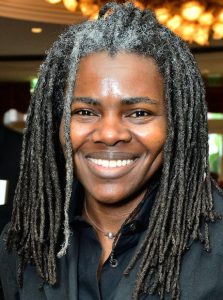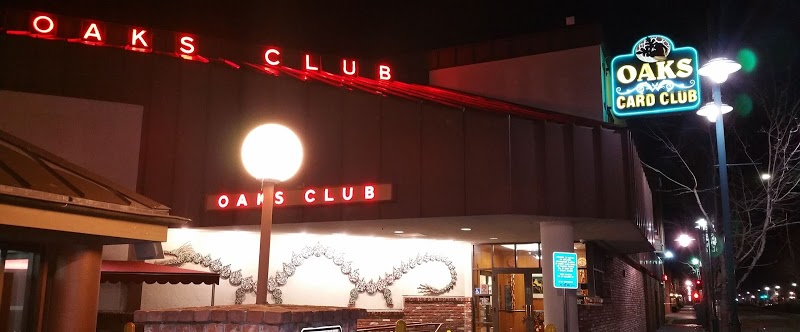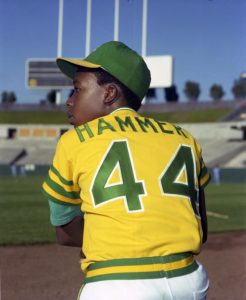March 30 is a good day for birthdays in the world of pop and rock. Let’s acknowledge three of them before moving on to the fourth of our birthday babies, someone whose fascinating life and even more fascinating financial foibles will make up the bulk of today’s post.

We gratefully mark the birth on March 30, 1945 – 75 years ago today – of the guitarist, singer, and songwriter Eric Patrick Clapton CBE (that’s “Order of Chivalry of the British Empire”) in the village of Ripley, in Surry, England, roughly 20 miles south-west of London. Clapton is one of the most gifted and influential musicians to grace his time. He is the only person to ever have been inducted into the Rock and Roll Hall of fame three times: as a solo performer and separately, as a member of the Yardbirds (in which he played from 1963 to 1965) and Cream (from 1966 to 1968). For what it’s worth – as such rankings are entirely subjective – Rolling Stone Magazine ranks Clapton as the second of its “100 Greatest Guitarists of All Time”. (Utter arrogance on the part of Rolling Stone, which should call its list “100 Greatest Rock ‘n’ Roll Guitarists of All Time.” For our information, Jimi Hendrix is rated as “number one.”)

We mark the birth on March 30, 1964 – 56 years ago today – of the singer-songwriter Tracey Chapman in Cleveland, Ohio. I’ve always had a soft spot in my heart for Ms. Chapman and her music. Raised in poverty by a single mother, she graduated from Tufts University (with a degree in Anthropology and African Studies) and has been a tireless activist for causes true and just. We would wish her many, many more happy, healthy birthdays before she hangs up her guitar.

We mark the birth on March 30, 1968 – 52 years ago today – of the singer Céline Marie Claudette Dion, in Charlemagne, Quebec, some 15 miles northeast of Montreal. A native French speaker, Dion recorded eight studio albums in French before recording her first one in English. To date she has recorded 15 studio albums in French and 12 in English.
And now on to our special birthday-dude for today.

We mark the birth on March 30, 1962 – 58 years ago today – of the rapper, hip-hopper, dancer, producer, and entrepreneur extraordinaire Stanley Kirk Burrell (better known as MC Hammer or just “Hammer”) in Oakland, California.
It is a distressingly familiar story among musicians and athletes who, when faced (often quite suddenly) with financial fortune after a lifetime of penury, often squander it all and go bust. Leaving aside athletes for now, musicians whose financial lives have traced a rags-to-riches-to-rags trajectory include Tony Braxton (born 1967), whose 67 million record albums sold and seven Grammy Awards won did not save her from declaring bankruptcy twice; David Crosby (born 1941), whose drug-infused life unraveled when he became a solo act, leading to bankruptcy; Willy Nelson (born 1933), who lost his fortune to the IRS when the managers he trusted to pay his taxes instead tried to hide his money in tax shelters (Nelson eventually owed the IRS $32 million; gulp); Jerry Lee Lewis (born 1935), who threw his career away by marrying his 13 year-old second cousin, spiraled into seven-figure debt and had to declare bankruptcy; and Michael Jackson (1958-2009), who was rumored to be $400-$500 million in debt when he died.
But when it comes to spectacular financial crash-and-burns, no one – not even Michael Jackson – measures up to the sheer, magnificent, painfully-disastrous flamboyance of MC Hammer/Stanley K. Burrell.


One of nine children, Hammer grew up in a small, 3-room apartment in the projects of East Oakland. His mother was a secretary and his father split his time: as a professional gambler and manager of the Oaks Card Club in Emeryville, California (a tiny city squeezed in between Oakland and Berkeley) and as the manager of a warehouse.
Young Stanley hustled for money in the parking lot of the nearby Oakland Coliseum, home of the Oakland A’s, selling stray baseballs and dancing to a beatboxer (that’s a vocalist mimicking a drum machine). In 1973, when Burrell was 11 years old, Charlie Finley, the owner of the Oakland A’s saw him dancing and doing the splits and hired him on the spot as a clubhouse assistant and batboy, dual positions he would hold for 7 years. It was the Oakland A’s right-fielder Reggie Jackson who took the credit for giving Burrell his nickname:
“I nicknamed him ‘Hammer,’ because he looked like Hank Aaron [whose nickname was ‘The Hammer’].”

Burrell/Hammer graduated from McClymonds High School in Oakland, took a few junior college classes in communications, tried out (unsuccessfully) for the San Francisco Giants as a second baseman, and then served a three-year stint in the Navy. All the while he performed at various clubs when on the road with the A’s and then later, as well, when he was in the Navy. He acquired the further nickname “M. C.” – meaning “Master of Ceremonies” – which he appended to “Hammer” when performing. On being Honorably Discharged from the Navy in 1984, Hammer self-produced a number of rap and hip-hop albums which were underwritten by, among others, the former Oakland A’s players Mike Davis and Dwayne Murphy. His big break came in 1988 while performing in a club in Oakland. An executive from Capitol records was there that evening who, according to the New Rolling Stone Encyclopedia of Rock & Roll:
“didn’t know who he was, but knew he was somebody.”
Capitol signed Hammer to a multi-album contract and gave him a $1,750,000 advance.
And so, almost overnight, Hammer achieved fame and fortune. Over the next ten years he was everywhere and appeared with everyone. He made recordings, commercials, music videos, voiced over a Saturday morning cartoon called “Hammerman” and got involved in all sorts of business and internet ventures. He won three Grammys, guest hosted Saturday Night Live, and appeared in movies. In 1991, Hammer earned a reported $33 million (the equivalent of $56.8 million today) and continued to earn roughly $30 million a year through the mid-1990s. But, incredibly, he spent that money faster than he could make it.
Where to start? Let’s start with the hired help. Hammer’s lifestyle gave new meaning to the phrase “it takes a village” (or in Hammer’s case, a small city), because at any given moment, his personal staff numbered around 200 people. He rolled with an entourage of some 40 people; hey, someone’s got to look after and launder those funky/baggy Hammerpants. The total payroll for all these good people exceeded $500,000 per month. (To his credit, we would observe that the majority of Hammer’s entourage consisted of out-of-work family members and friends from his old neighborhood. Still, this was no way to run a business.)
Then there were the rides. At one point he owned 17 luxury cars (including a Lamborghini), a stretch limo, a private jet, and two helicopters.
Then there were the racehorses. In 1991, Hammer created what he called “Oaktown (as in ‘Oakland’) Stable” to house what would eventually be his 19 Thoroughbred horses. (One of those horses, a colt named Dance Floor, finished third in the 1992 Kentucky Derby.) The purchase price for the horses was between $250,000 and $1 million each.
But finally and most ruinously, there was the house. Hammer built his little pied a terre on 12.5 acres at 44896 Vista del Sol in the hills of Fremont, California, roughly 20 miles south and a thousand light years away from the East Oakland neighborhood in which he grew up.
The construction cost $30 million. For his money, Hammer got an 11,000 square foot mansion (not 40,000 square feet, the number plastered all over the internet), which included a bowling alley, a hair salon, a complete gym, a reflecting pool, two swimming pools (one of them indoors, the other in the shape of someone dancing in Hammerpants), Italian marble floors, multiple tennis courts, a 17-car garage, a baseball diamond, a recording studio, a 33-seat theater, marble statues of Hammer himself, a helipad, sweeping views of the San Francisco Bay, gold-plated driveway gates emblazoned with the phrase “Hammer Time” and, of course, the requisite golden toilet in the master bathroom.

We are told that in addition, Hammer and the missus spent untold millions furnishing the place with rare antiques.
It is estimated that Hammer blew through roughly $73 million between 1990 and 1995, by which time he was not just broke but $13 million in debt. In April 1996 he filed for bankruptcy. The cars, jet, helicopters, horses, and antiques all went bye-bye. The entourage evaporated. Hammer’s $30 million dream house was listed for $6.8 million and sold in 1997 for $5.3 million (it most recently sold in August 2012 for $5.4 million).
Then the IRS descended, and things got really bad. Suffice it for now that Hammer, father of five (three boys and two girls), who today lives with his wife in a ranch house in the Bay Area suburb of Tracy, California, will very likely be paying off the United States Treasury, the State of California, and the County of Alameda for the rest of his days.
Ever the entrepreneur at heart, Hammer has clawed his way out of the red (for which he might now consider calling himself “Claw-Hammer”) with all sorts of business and performing ventures and has additionally dedicated a significant portion of his time and energy to the Pentecostal Church.
The one place today that the larger public will regularly see Hammer is in TV commercials, commercials in which he not only banks off his once great fame but – I think most admirably – pokes fun at himself and the financial disaster that befell him.
Among his many commercials are a 2020 Super Bowl ad for Cheetos, in which the protagonist, his fingertips smeared orange from eating Cheetos, can’t touch anything, as in the song U Can’t Touch This:
Making fun of his name “Hammer”, Mr. Burrell made a series of ads for a 3M product called “Command Hook”, which allows someone to hang pictures without the use of a hammer and nails:
A commercial for Lays Potato Chips, made in 2015, makes fun of Hammer’s disappearance from the larger public eye:
Finally, in a 2009 commercial made for a financial service called “Nationwide”, Hammer addresses his own financial follies:
Any person who has experienced what M.C. Hammer has experienced and can still manage to keep his head and his sense of humor deserves our respect. Happy birthday, Mr. Burrell: may the years to come bring you nothing but joy and not another penny of debt!
Please, if you haven’t already, consider joining me at the subscription platform Patreon!
Listen on the Music History Monday Podcast
Podcast: Play in new window
Subscribe: Apple Podcasts | Spotify | Pandora | iHeartRadio | RSS | More
